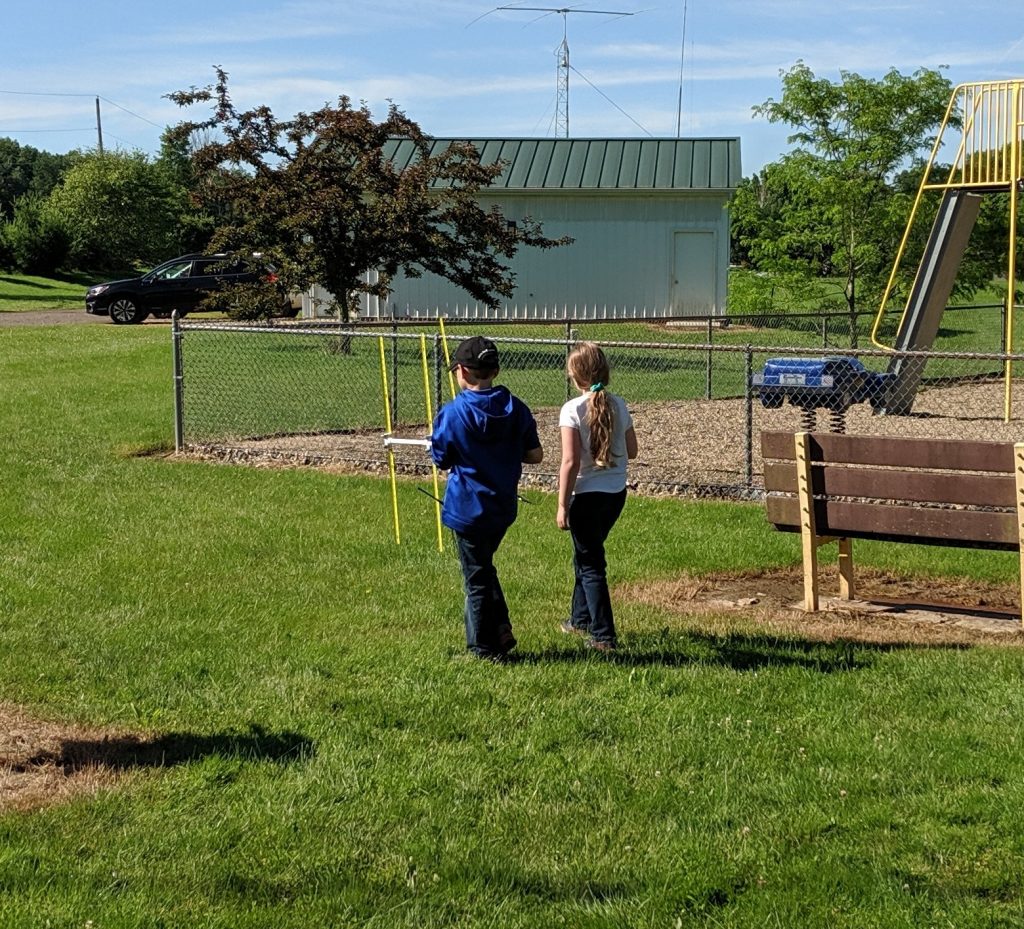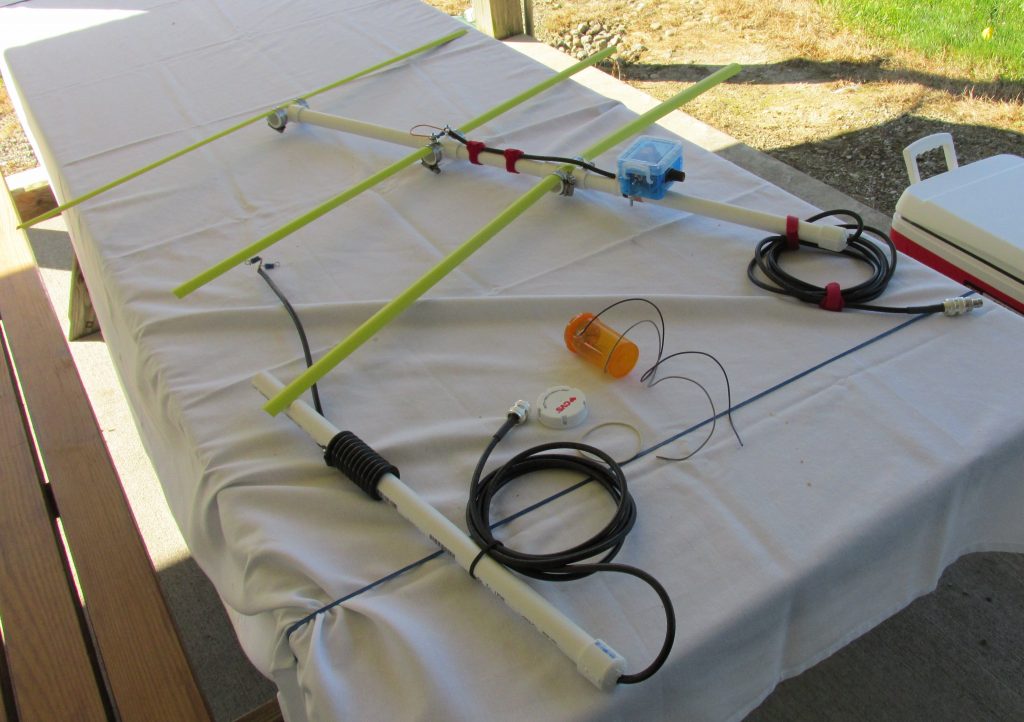How do you convince a young person to drop the video controller, put away the smartphone, step out into the sunlight, and give Ham Radio a whirl?
Cue the Mission Impossible theme and try this pitch: There’s a transmitter hidden somewhere in a field. It could be anywhere! The fate of the world depends on you finding it before the bad guys do. The clock is ticking, and all you have to work with is a directional antenna, a handheld radio, and your ultimate superpower—your brains. Are you up for the challenge?
Okay, maybe a little overdramatic, but those who love fox hunting understand there’s nothing more exhilarating than the thrill of the chase and the rewards of using your wits to be the first to find the elusive transmitter (the fox) before the competition does.
To a youngster with a vivid imagination, it’s a live action video game, the climactic scene from a superhero movie, or a chance to discover clandestine pirate treasure. For those with an inclination toward science, fox hunting is Pokémon Go without the anime, but with a lot more value in learning about radio signals, antennas, and electronics. To Elmers who want to share their awesome hobby, fox hunting can be an excellent portal to introduce a new generation—tomorrow’s search-and-rescue operators—to the fun and usefulness of Amateur Radio.

What Exactly Is it?
In fox hunting, participants attempt to find a hidden transmitter, or transmitters, using handheld directional antennas within a designated area. Searches can be done on foot, in a vehicle, or even from your own shack in the case of fixed transmitter location hunts. Some hunts, often organized by local clubs, are just for kicks while others are highly competitive and offer prizes for the most skilled hunters. Competitive fox hunting is most popular in Europe and Asia, but the activity has gained a nice following of enthusiasts in North America.
How to Get Youth Involved
It doesn’t take a huge effort on the part of your Amateur Radio club to set up a fox hunting event at your next picnic or at Field Day. Here’s what you need:
- Ample space to allow your fox chasers to roam in search of the hidden transmitter(s).
- One or more handheld directional antennas—An affordable choice (and cool project to boot) is the popular homemade three-element, 2-meter tape measure Yagi antenna, featuring elements cut from your average steel tape measure, PVC pipe, hose clamps, and a hairpin match to the coaxial cable. You’ll find numerous online tutorials and instructions about how to build them for about $20 plus the gas it takes to drive to the hardware store. Of course you can also use commercially available handheld directional Yagis that come with all the bells and whistles.
- Two-meter handy-talkies connected via coax to the antennas.
- Attenuators are not mandatory fox hunting equipment (especially for simple a Field Day demonstration), but your hunters will certainly appreciate having them. When you near the transmitter, its signal will be too much for the S-meter on the radio to handle. This can be mitigated with an attenuator connected to the antenna or HT. The attenuator reduces the signal strength and allows you to narrow your search when you’re getting close to the prize. Read about MFJ’s Step Attenuator here.
- Two-meter transmitters, such as the RigExpert Red Fox 144 ARDF Beacons available at DX Engineering.
- Finally, a group of enthusiastic kids and Ham Radio veterans eager to show them the ropes.

For Field Day 2019, the Portage County Amateur Radio Service (PCARS) hosted a successful fox hunting activity in which two teams of kids took turns hiding and finding the fox. PCARS president, Jim Wilson, AC8NT, gave these hints on how your club can get into the fox hunting spirit.
“First, we have an event to build a tape measure antenna that will be used in the fox hunts,” he said. “This usually requires about three hours to complete and is great for a Saturday morning. Both adults and kids love a good hands-on event where something can be built and used. We also include an attenuator unit in the build and cover basic antenna theory as part of the event.”
Second, hunters are trained how to use the Yagi antenna, attenuator, and the two-meter handheld to point in the direction of the fox.
“This is not as simple as it sounds,” Jim, AC8NT, explained. “They learn that many factors affect the direction to the fox including reflections of the signals from water towers, buildings and other structures. You can get a lot of exercise finding a good bearing to the fox.”
Then it’s time for the actual hunt.
“One or more foxes are hidden in trees and other structures that must be found in a given order,” he said. “We use foxes that all transmit on the same frequency but send out different Morse Code identifiers. We give the ID of the first fox which, when found, has the ID of ‘fox two’ and so forth. Each fox also has a written message that must be copied to prove it has been found. The first team to find all the foxes in the correct order wins. Even if you use only one fox, you can have a lot of fun with one of these events. At Field Day several kids spent hours running around the park finding a fox.”
If your club is really ambitious, you can step up your game by hosting a long-distance fox hunt.
“Here an operator goes to a location and starts broadcasting the fox message, usually every couple of minutes,” Jim, AC8NT, said. “The hunters start from another location and, as with all of these hunts, try to find the fox. Some sophisticated doppler equipment is usually used to locate the fox. It has a display that is supposed to point to the fox. Even with this equipment it takes some experience, skill and a little luck to find the fox. To give some idea of scale, the fox can often be many miles away from the hunt starting point and require some serious time to find. Still, it is great fun.”
Based on his experiences, Jim, AC8NT, offered these words of wisdom to clubs looking to enjoy the challenge of fox hunting.
- Remember that building the antenna is a great start. It cuts the cost of entry and gives the builders a great sense of accomplishment. The leader of the build should be ready to answer questions and tune the finished products.
- If you are allowing unlicensed participants, use handhelds that can be easily modified to only receive. These modifications can be reversed when the operator gets his ticket.
- Start with simple hunts. Use a single fox and pick a park where you can plant the fox on one of the trails. You don’t want anyone to get hurt or lost.
The Big Time
For many fox hunters, the ultimate challenge is Amateur Radio Direction Finding (ARDF)—a multi-transmitter, on-foot race over acres of forest or parkland. ARDF events test the participants’ physical fitness, radio direction finding skills, and orienteering ability. The IARU 22nd IARU Region 1 ARDF Championships were held in Slovenia September 2-8. Teams from 28 countries, including a non-competing guest team from the U.S., hunted in the mountains of Zrece in northeastern Slovenia.
The 19th USA National ARDF Championship and 10th IARU Region 2 ARDF Championship were held near Raleigh, North Carolina, July 28 to August 4. Thirty-six competitors, ranging in age from 8 to 73, took part in the classic 2- and 80-meter fox hunting competitions. There were also foxoring events, which combine orienteering and RDF on 80 meters; and sprint events—an 80-meter challenge featuring short courses that require hunters to find two sets of five transmitters. Results of the championship will be considered when selecting the ARDF team to represent the U.S. in the 20th ARDF World Championship scheduled for fall 2020 in Zlatibor, Serbia.
For many more details, click on this link to the Homing In website with loads of information about “The Art and Science of Radio Direction Finding.” And read more about fox hunting equipment available from DX Engineering, including RigExpert ARDF Receivers.


Pingback: Fox Hunting—Getting Young People Hooked on the Adventure of Ham Radio - Ham Radio News
Pingback: Como convencer um jovem a guardar o smartphone e se aventurar no Radioamadorismo? | ARAF